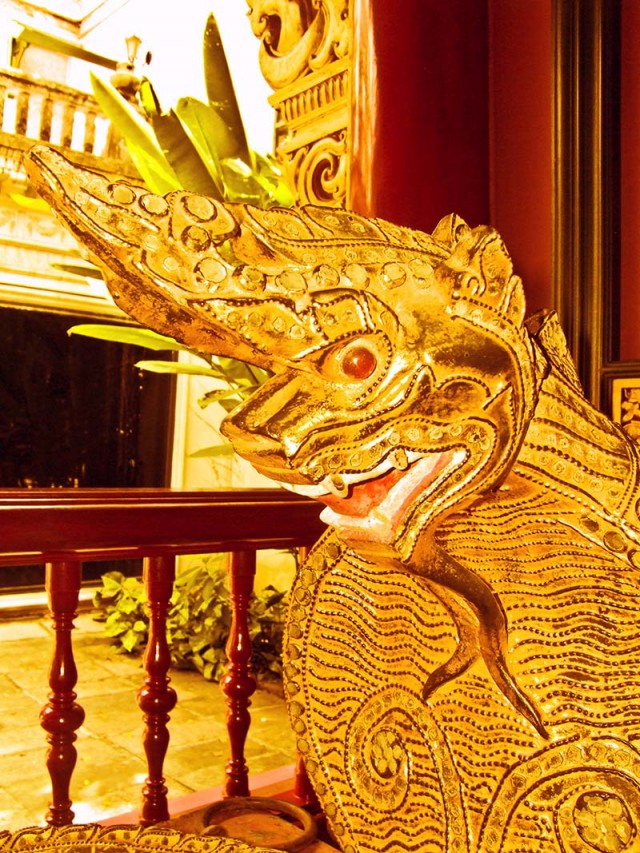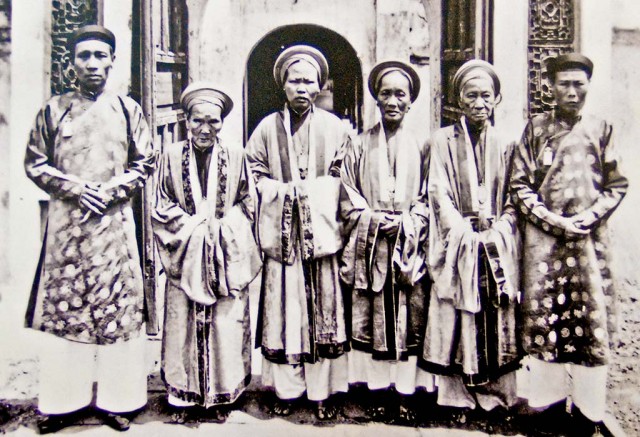
The contrasts between old and new couldn’t be starker that in Vietnam today.
As Oceania Cruises’ luxurious Nautica docked near downtown Saigon, a rust-eaten freighter at the next slip was being unloaded the same way it might have been centuries ago. A human convoy of long-shore men carried sacks of rice that seemed as large as they were down the gangway and onto hand trucks on the pier.
In fact, little about the old city seemed to have changed since the last time I was here 15 years ago except that its official name is now Ho Chi Minh City.
It was clear, though that change is on the way. Looming over the scene were cranes building an ultra-modern 40-story tower called the World Trade Center, clad in gleaming glass and decidedly larger than anything else in the heart of this low rise city.
Despite that nod to architectural progress, infrastructure is still not the forte of Vietnam, as I learned on shore excursions from Nautica during its two-day port call in the Mekong Delta. The 600-passenger ship was small enough to be able to dock right near the center of old Saigon, making it a perfect staging area for a guided tour of the colonial city’s highlights, which are mostly within walking distance.
Getting Nam Legs
The guide told us we’d have to learn to cross streets as the locals do in Saigon or we’ll be in danger of causing injury to ourselves or causing a multi-vehicle pileup. Motorcycles outnumber cars four to one and there are few traffic lights. The way you cross roads is to stride confidently into the sea of cycles that are racing at full throttle down the avenues.
It was gut-wrenchingly scary at first. But like a scene from The Matrix, traffic seems to flow around you if you keep moving in a predictable way. Lose your nerve and stop or try to backtrack and riders will have to brake and disaster may ensue.

To Market, to Market
The first stop was the vast and bustling French colonial Binh Tay Market with its maze of shops that can give you whiplash as your eyes are drawn by colorful goods displayed floor to ceiling. Locally made handicrafts include gorgeous hand-painted screens and fans and beaded purses, all so freshly made you almost get intoxicated by the aroma of still-curing glue and lacquer.
Western-style sportswear, shoes and children’s clothes are specialties, as are reproductions: “No, these are not fake Breitling watches, these are real Breitlings.” Believe that at your peril. Many shops have such things as engraved Zippo lighters supposedly left behind by American soldiers. Seeing hundreds of them in different shops, with dents in the same places, it’s clear they are coming out of a local factory, complete with dirt and scratches.
Actually, Vietnam is defending trademark copyrights more aggressively than some other places in Asia. The copied designer goods here tend to sport nonsense brand names like Gunci, Praba and Shishendo.
In the nearby old center of the city, known as District 1, we found more upscale boutiques. Vietnamese lacquerware that is among the finest in Asia, gorgeous silk dresses and fashionable shoes sell here at a fraction you’d pay elsewhere. If you can’t find clothes in stock in Western sizes, the shop will custom-tailor to fit. My wife had silk dresses made for $40 each and shipped home for an extra $10 and they fit perfectly. And copies though they are, some of the bronze sculptures and art nouveau lamps you can buy here are worthy of a museum.
Prices are so low that there’s little incentive to haggle, and in fact unlike many other parts of Asia, many stores have signs that say prices are firm, although discounts can be arranged if you buy more than one. A change from my previous visit a decade ago is that the young shopkeepers all speak passable English. It’s taught from early grades in the schools.
The Rex Still Rules
During the American involvement in Vietnam, the classic Rex Hotel with its revolving neon-lit crown was the place where reporters and military brass converged at the bar they nicknamed “mahogany ridge.” Here, reporters could gather enough facts and rumours about the war to write a dispatch without having to interrupt their drinking.
The hotel still looks much as it did in the Sixties, despite a renovation by the Government that included adding much needed air conditioning. The outdoor bar was restored with throwback tiki patio lanterns and oversized Chinese dragon statues. A nostalgia menu of snacks includes spring rolls and Crêpes Suzettes available 24 hours a day. The prices seem great by overseas standards, with a pint of the local 333 beer going for about $2. On the street, of course, you can get a can of the brew for about 50 cents.
Into The Heart of Darkness
The next day, we took a tour south into the delta of the Mekong River, with its haunting waterways overgrown with trees and vines that made guerrilla warfare a nightmare for soldiers on both sides.
The scars of the carpet bombing of the Mekong Delta during the long war in the 1960s and 1970s have healed and a substantial new road has been built through parts of the verdant southern rice paddies. However, older parts of the highway still featured potholes the size of bomb craters.
As they have for centuries, farmers here still favor water buffalo for hauling and plowing. The infrastructure time warp continued when we finally reached a dock for a boat trip to explore the Delta’s maze of narrow waterways.
Our ancient wooden boat looked like it was built for the set of Apocalypse Now, with hard bench seats and a suitably wheezing engine.

After an hour of chugging up narrower and narrower channels, we stopped at a muddy shore where the dock, such as it was, consisted of a wide but rickety plant shoved out to the boat. Here, we found a village of ancient thatched houses whose owners sell jars of local honey and the ultimate souvenir of Vietnam: bottles with snakes and scorpions floating in rice wine. I could only imagine what kind of story I’d have to tell airport security when they opened my bag and found one of those.
Our guide, Tranh, led us along a winding trail through a jungle of palm trees and hanging vines to a clearing where dozens of tiny rowboats awaited. In each, women in conical hats sat ready to paddle us, two at a time, on a ride that’s the closest thing on Earth to a trip down the River Styx.
Keep your hands inside at all times, we’re warned, as the boats scrape against mangroves and fernlike palm trees that are big enough to hide a platoon of soldiers. Every so often, the shoreside thicket suddenly cleared revealing a thatched hovel that may or may not be abandoned. A potential ambush around every bend? The horror, the horror.
But that was then. Now, it’s so silent you can hear every twig crack, every splash of the oars. It’s spooky at times, yet a gorgeous journey that’s a must do on a stop in Saigon.







